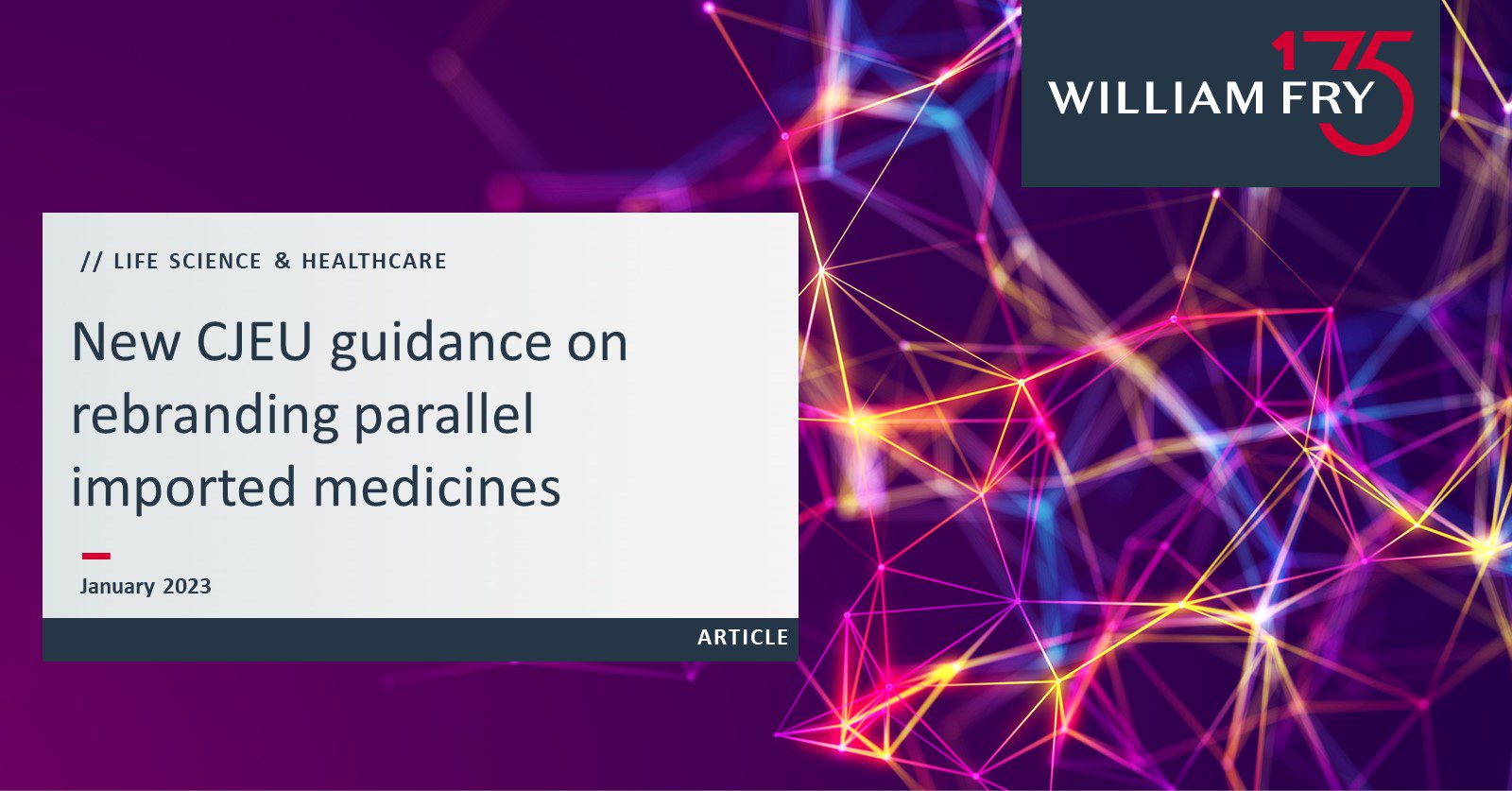In a recent decision, the Court of Justice of the European Union (CJEU) issued new guidance on when parallel importers can rebrand generic medicines with the original trade mark of the reference medicinal product (C-253/20 Impexeco v. Novartis AG and C-254/20 PI Pharma NV v. Novartis AG).
Novartis marketed two different medicinal products, one in Belgium and the Netherlands under the trade mark FEMARA (CASE C-235/20), and the other in Belgium under the trade mark RILATINE and in the Netherlands under the trade mark RITALIN (CASE C-254/20). Novartis’ generic division, Sandoz, sold identical medicinal products as generics using the names ‘Letrozol Sandoz 2.5 mg’ and ‘Methylphenidate HC1 Sandoz 10 mg’
In 2016 and 2017, Novartis issued trade mark infringement actions against two Belgian companies, PI Pharma and Impexeco. Both Belgian companies are active in the parallel trade in medicinal products. Impexeco and PI Pharma imported the generic Sandoz products from the Netherlands and then repackaged and rebranded them for sale in Belgium under the Novartis reference product names, ‘FEMARA’ and ‘RILATINE’.
Novartis successfully applied for injunctions before the Brussels Commercial Court. On appeal, the Brussels Court of Appeal referred several questions to the CJEU.
Essentially, the question for the CJEU was whether the owner of trade marks for both a reference medicinal product and a generic medicinal product could prevent parallel imports between EU Member States of the generic products, where the generic products had been repackaged in new packaging that displayed the trade mark of the corresponding reference medicinal product.
The CJEU confirmed that the trade mark owner can prevent such repackaging, except where:
- the reference and generic medicinal products are identical in all respects; and
- the replacement of the trade mark satisfies the “BMS conditions”.
The CJEU observed that reference and generic products may not always be identical, despite being therapeutically equivalent. It noted that products may be identical in all respects in particular where the reference medicinal product and the generic medicinal product are manufactured by the same entity or by economically linked entities and which, in actual fact, constitute one and the same product marketed under two different sets of rules. The key question is whether it is established that repackaging is objectively necessary in order for the parallel imported medicinal products to be marketed in the latter Member State. In the present case, the CJEU held that the generic medicinal products at issue in each of the cases were identical to the corresponding reference medicinal product.
The CJEU then examined the conditions set out in Bristol-Myers Squibb and Others (C 427/93, C 429/93 and C 436/93, EU:C:1996:282) (BMS), as considered in Boehringer Ingelheim and Others (C 348/04, EU:C:2007:249) and Junek Europ-Vertrieb (C 642/16, EU:C:2018:322). These cases establish that a pharmaceutical company can rely on trade mark rights to oppose the relabelling of its medicines in the EEA unless the following five conditions are met:
- the use of trade mark rights to oppose relabelling would contribute to the artificial partitioning of the markets between Member States;
- it is shown that the repackaging cannot affect the original condition of the product inside the packaging;
- the new packaging clearly states who repackaged the product and the name of the manufacturer;
- the presentation of the repackaged product is not such as to be liable to damage the reputation of the trade mark and its proprietor;
- the importer gives notice to the trade mark proprietor before the repackaged product is put on sale and, on demand, supplies it with a specimen of the repackaged product.
The CJEU considered the necessity of rebranding a generic product under the trade mark of the reference product to ensure the free movement of that product in the internal market. In doing so, it found that where a parallel imported medicinal product cannot be marketed in the importing Member State under its trade mark of origin, the replacement of that trade mark is objectively necessary in order to ensure the free movement of that medicinal product in the internal market. On the other hand, where a parallel importer can market the generic medicinal product under its trade mark of origin by adapting the packaging to satisfy the market requirements of the importing country, there is no objective “necessity” to rebrand. In such a case, the free movement of goods is not threatened, and therefore cannot take precedence over the trade mark proprietor’s legitimate interests in opposing relabelling.
The CJEU further noted that a Member State cannot refuse a parallel import licence for a generic medicinal product if the corresponding reference product already has marketing authorisation in that jurisdiction, unless such a refusal is justified by considerations relating to the protection of health and life of humans.
Finally, the CJEU held that there was no objective necessity to rebrand if the rebranding is exclusively motivated by the pursuit of an economic advantage.
This decision provides a welcome restatement of the BMS conditions, which should be carefully considered by pharmaceutical trade mark proprietors and parallel importers alike.
Contributed by John Sugrue, Anna Lee Dowling
Recommended Insights






















